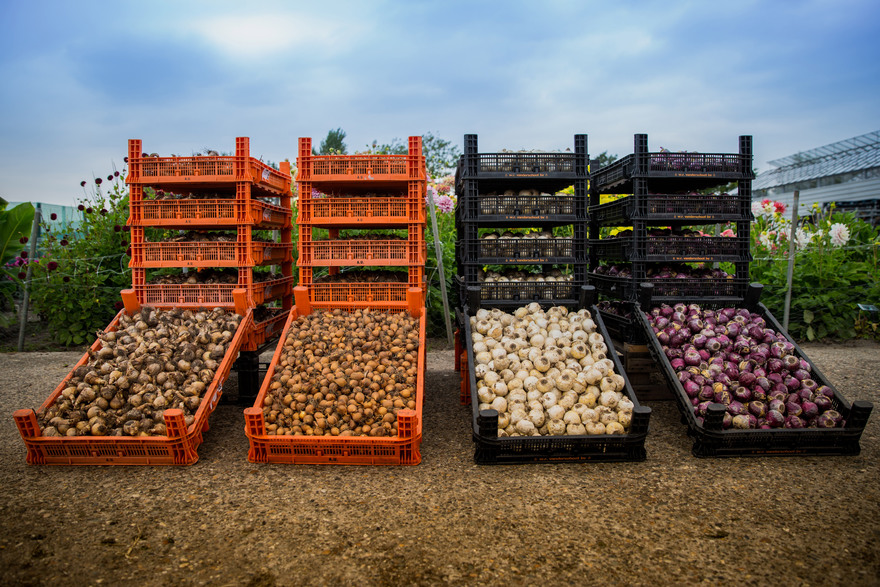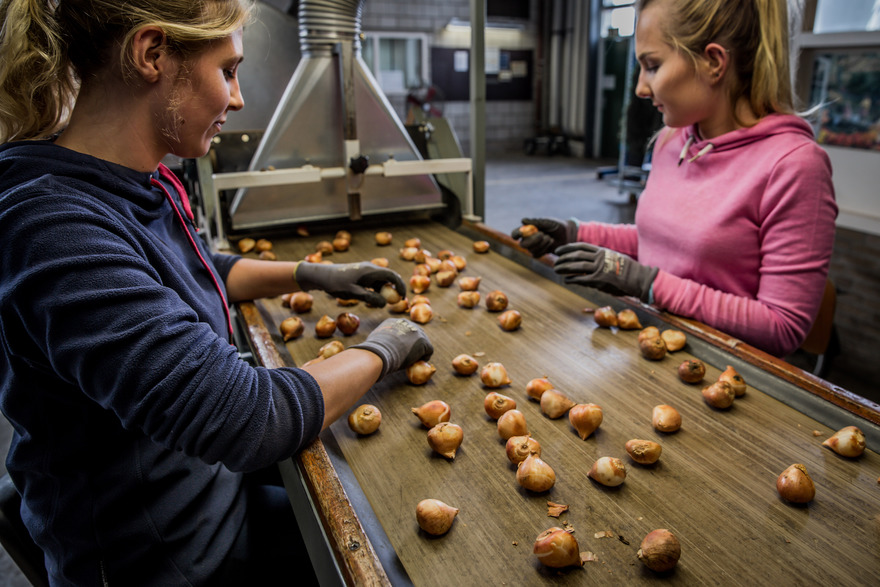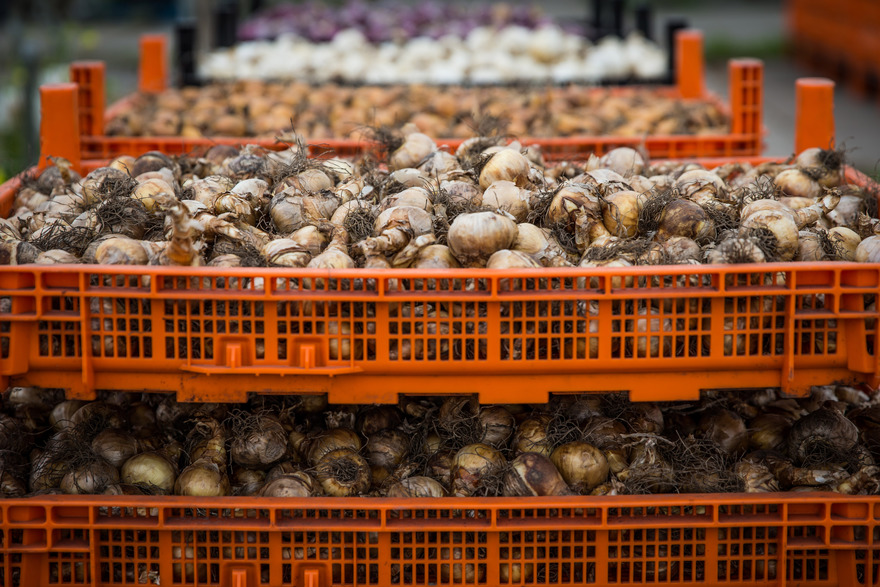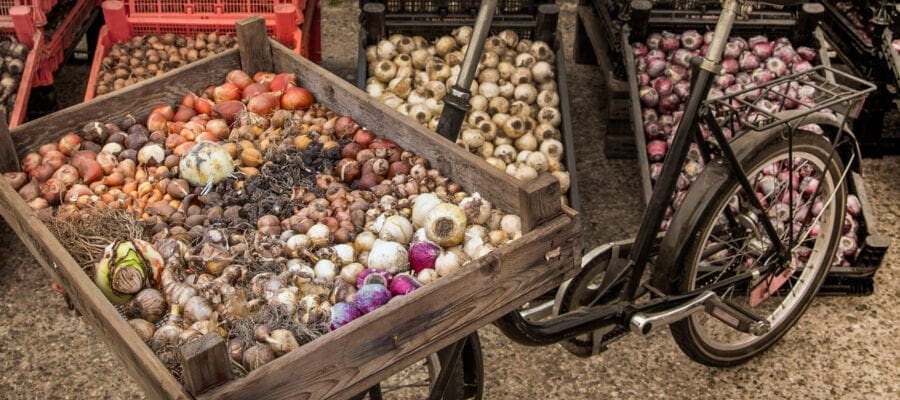The Bulb Book is a collection of top tips to make the most of bulbing season this year from Wyevale Garden Centres bulb expert Patrick Wall
1 Choose wisely
Ask yourself the following questions: what sort of colours do I want in my garden? Am I looking to just grow flowers or do I want to start a vegetable patch? Am I planting in a pot or in a bed? Once you have your answers, it’s time to start choosing! Depending on the month, there should be a great selection at your local centre, from pansies to Sweet Williams. Bulbs are a low-cost way to add splashes of colour to your garden so make sure you pick up a vast selection – you will most likely be planting them quite close together, so the more the merrier! Plump, firm bulbs work better so avoid any with signs of mould and softness.
* Expert Tip *
Choose a variety of bulbs that flower at different times between January and May so you have a succession of colour.

2 Scout the spot
Popular bulb varieties such as daffodils and tulips need sunny, dry spots in order to grow, so preferably choose to plant in areas with a good amount of sun – although this may seem obvious it can be quite difficult to find the perfect area. Avoid areas you know get very wet during the colder months and instead choose sheltered areas that will be able to absorb the small amount of winter sunshine. Picking the perfect patch means you will be less worried about bad weather spells between now and spring.
3 Prep your soil
Whether you are planting directly or into a pot, the first step is to always prepare the soil for maximum growth. When planting in beds mix compost into the soil to provide rich nutrients for the bulbs to start flourishing. As pots require good drainage, it’s best to avoid soggy soil. Remember to clear any weeds or damaging plants out of your bed before getting started.
* Expert Tip *
To ensure your bulbs are strong and healthy, use special bulb fibre compost – the best way to ensure long-lasting bulbs.
4 Top tools
These don’t have to be expensive, but in order to plant and maintain your bulbs throughout the winter, smaller tools such as trowels and hand rakes, plus a large watering can, are staples. Small tools mean you can get up close to the soil to ensure you are digging the appropriate size hole for the bulbs and a large watering can makes watering bigger beds simple and less time consuming – no one wants to spend too much time outside in winter! Some bulbs, such as hyacinths, can aggravate skin so stocking up on thick gloves is key to staying irritant-free when planting. If in doubt about which bulbs aren’t safe to handle without gloves always check with staff before buying.

5 Dig deep
Digging deep is the key to getting the best out of your bulbs. Ensure the hole depth is always double or even triple the size of the actual bulb and at least a bulb’s width away from each other – bulbs need their space to flourish! Aim to plant the bulbs with the shoot facing up, however if you are unsure about which side the shoot is, plant on their side and the shoot will eventually find its way to the surface.
6 Arrange, arrange, arrange!
Depending on your chosen bulbs, flowers such as tulips always create a better formation when they are planted in a large group. You don’t have to stick to one colour; experiment with different hues and types in your bed or pot to create an interesting display – your reward for all your hard work when they eventually blossom!
* Two Expert Tips *
1. If creating a strict formation isn’t for you, try putting a mixture of your favourite bulbs in a bag, spin around and throw them in the air – then plant them where they land! It is less regimented and a fun way to add colour to different sections of your garden.
2. Try ‘lasagne’ planting if you’re planning to plant in pots – layering bulbs with different flowering times results in months of wonderful colour without having to re-plant new bulbs each season.
7 Shower with love
The autumn weather can get quite dry so ensure you don’t forget about your poor bulbs! Although they do grow better in drier soil, if they get too dry they won’t survive – plan a regular water cycle alongside the usual British downpours, instead of relying purely on nature.
The more you take care of your bulbs the more they will benefit from it, and the more colourful flowers you will have for your display.
* Expert Tip *
If you’re worried about having to take care of your blooms throughout the colder months, choose snowdrops – they are the ultimate winter flower and can even survive frosts and snow so you don’t have to worry about protecting them. Plant under Hellebores for an early winter display that will see you through to spring.

8 Pot luck
Even if you don’t have large outdoor space, you can still become a bulb expert – planting in pots is a growing trend! Most bulbs can be grown in containers and larger flowers such as daffodils particularly thrive in a smaller environment.
Choose pots that have drainage holes and are deep enough for the bulbs and a few inches of soil. Always ensure that you stick to a similar hole depth as beds and plant at least one bulb width apart. Pot bulbs do not need to be watered as frequently as bed bulbs due to slower drainage but will still need to be watered regularly during the key active growth season – keep an eye on them during the colder months so they don’t dry out.
* Two Expert Tips *
1. If you decide to bring your pots inside, keep them sheltered and they will fill your house with colour!
2. Pots are perfect for mixing things up – you can plant a certain bulb for a month or so, and then replant with a new bulb easily. This gives you flexibility to experiment with colour trends or new varieties of bulbs.
9 Problem solving
No plant is immune to the occasional growing difficulty; slugs, snails, and squirrels can be a huge problem for growing bulbs so watch out for pesky pests during the season. Diseases can also strike bulbs, with daffodil viruses, tulip fire and grey mould in snowdrops being key examples of issues that can ruin your bulbs.
Look out for signs of these diseases on the emerging shoots and dispose of the infected bulbs early to avoid mass infection. For information on how to get rid of pests and looking out for tell-tale signs of infection talk to staff in-store.
* Two Expert Tips *
1. To keep pesky slugs away from your bulbs, fill a shallow bowl, or a half buried glass in the soil, with beer. Slugs find beer irresistible and will easily become trapped. Don’t forget to empty your bowl and replenish the beer every couple of days though!
2. September is the best time to also start your battle for next year – slugs are laying eggs in autumn. The more you remove now, the less of a problem they will be next year.
10 Missed the best time? Don’t panic
Bulbing season isn’t always at the forefront of your mind, particularly if this is your first bulb season. If you’re starting a bit later, firstly decide which bulbs you are looking to plant: if tulips are your top choice then they are best planted in November so you can afford to leave them a little later on in the season.
With other bulbs, check them for firmness as they may have become too soft over time, and then plant any firm bulbs as soon as possible. While they may not seem strong in the first year, keep them uplifted with fertiliser and they should get better each year. To avoid this scenario, try to plan your planting schedule in advance – you will be an expert in no time!





